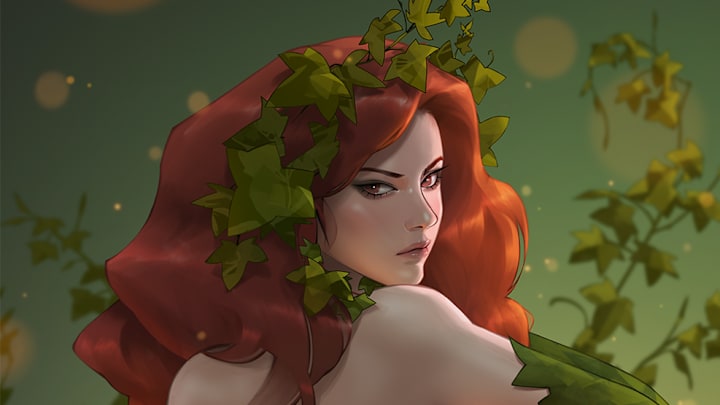Sometimes our moods can dictate the way we perceive something. In my case, I wasn’t mentally ready for G. Willow Wilson’s Poison Ivy. The story was too deep and I wasn’t in an emotional place to appreciate the story. So I stopped after the first issue when it was released. I recently went back to check it out and am glad I waited until her brilliance could be properly treasured.
Poison Ivy: The Virtuous Cycle follows Pamela Isley as she sets off to kill humans worldwide and return the planet to nature. Unfortunately, two things will happen in the process. First, the fungi she’s using (Ophiocordyceps Lamia) are killing her. Second, killing off the humans means the love of her life, Harley Quinn, will die too. Instead of leaving Harley high and dry, she writes her a note that serves as the narration for the series.
“And because, after all, we’re not so bad. We can still grow things. Gardens. Communities. Friendships. Against all odds.” Poison Ivy
Along the way, thanks to some kindhearted people, Ivy finds reasons to live and understands herself better. She sees that, while the world is littered with people who don’t care about Earth or each other, the good ones are worth being kind to and living for. She also understands that she needs to show herself compassion too. The latter is a lesson a lot of us could learn.
Writer G. Willow Wilson got into the trauma that Ivy went through courtesy of an abusive mentor and later came down from being a god and losing those abilities (that happens in Batman: Fear State). They're two sides of an emotional spectrum, but each comes with things to unpack. In six issues of Poison Ivy, G. Willow Wilson unpacks them leaving readers wanting more.
Keeping readers visually stimulated are artists Jay Leisten, Marcio Takara, Brian Level, and Emma Rios. They don’t just bring Pamela Isley to life. The way they depicted Poison Ivy as a goddess and the hallucinations her victims saw were incredible. There’s also the detail in making the fungi look horrifying and beautiful at once.
"I try because I finally feel I have things to live for." -Poison Ivy
Lastly, this writer will leave you with this. Yes, comic book fans should check out Poison Ivy: The Virtuous Cycle. However, everyone will interpret the message in the story differently. For me, it was a reminder that life is worth living. Not just for the people you love, but for yourself too. Others may find something else to love and take from it. Either way, there’s beauty in the words, art, and subtly.
Have you read G. Willow Wilson's Poison Ivy? Does this article make you want to give it a shot? Let us know on the Bam Smack Pow Bluesky, Instagram, and Twitter.
